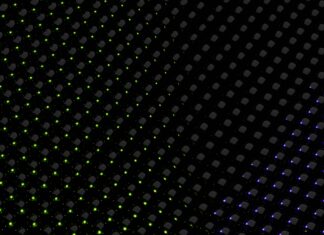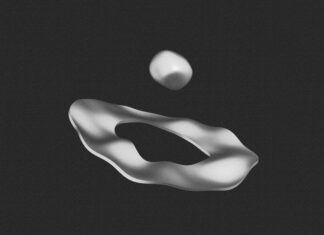Lactoferrin, a multifunctional glycoprotein found in various biological fluids, stands as a testament to the intricate interplay between nutrition, immunity, and human health. Its significance spans a multitude of physiological processes, ranging from its well-documented antimicrobial properties to its emerging roles in modulating immune responses, promoting intestinal health, and even exerting anti-inflammatory effects. As one delves deeper into the multifaceted realm of lactoferrin, its diverse array of functions and therapeutic potentials come to light, underscoring its status as a pivotal player in the intricate tapestry of human biology.
Lactoferrin, a member of the transferrin family, derives its name from its abundance in mammalian milk, where it serves as a vital component of the innate immune system, providing crucial defense mechanisms against microbial invaders. Within the context of breastfeeding, lactoferrin assumes a multifaceted role, not only as a source of essential nutrients for the developing infant but also as a frontline defender against pathogens. Its ability to sequester iron, an essential nutrient for bacterial growth, serves as a formidable barrier against microbial colonization in the infant gut, thereby conferring protection against infectious diseases. Furthermore, lactoferrin’s antimicrobial properties extend beyond its iron-binding capacity, encompassing direct bactericidal and bacteriostatic effects against a broad spectrum of pathogens, including bacteria, viruses, fungi, and even parasites.
In addition to its antimicrobial prowess, lactoferrin exerts a myriad of immunomodulatory effects, orchestrating intricate signaling pathways that regulate innate and adaptive immune responses. By virtue of its interactions with immune cells and cytokines, lactoferrin plays a pivotal role in shaping the immune landscape, balancing pro-inflammatory and anti-inflammatory processes to maintain homeostasis and safeguard against immune-related disorders. Moreover, lactoferrin’s ability to modulate the activity of immune cells, such as macrophages, dendritic cells, and T lymphocytes, underscores its potential as a therapeutic agent for a wide range of immune-mediated conditions, including autoimmune diseases, allergies, and inflammatory disorders.
Beyond its immunological functions, lactoferrin exerts profound effects on gastrointestinal health, exerting protective and reparative effects on the intestinal mucosa. Within the dynamic ecosystem of the gut, lactoferrin serves as a guardian of intestinal homeostasis, bolstering the integrity of the epithelial barrier and mitigating inflammation-induced damage. Its multifaceted mechanisms of action, including its ability to modulate microbial composition, enhance mucosal immunity, and promote epithelial cell proliferation and differentiation, underscore its therapeutic potential in the management of gastrointestinal disorders, such as inflammatory bowel disease (IBD), irritable bowel syndrome (IBS), and infectious gastroenteritis. Furthermore, emerging evidence suggests that lactoferrin may play a role in the prevention and treatment of colorectal cancer, owing to its ability to inhibit tumor cell proliferation, induce apoptosis, and modulate immune surveillance mechanisms.
In the realm of reproductive health, lactoferrin emerges as a key player in the intricate interplay between nutrition, immunity, and fertility. Its presence in various reproductive fluids, including semen, vaginal secretions, and cervical mucus, underscores its importance in reproductive physiology and pathophysiology. Lactoferrin’s antimicrobial properties serve to protect the reproductive tract from ascending infections, thereby safeguarding fertility and reproductive outcomes. Moreover, its ability to modulate immune responses within the reproductive microenvironment suggests a potential role in the prevention and treatment of reproductive disorders, such as infertility, endometriosis, and sexually transmitted infections.
Furthermore, lactoferrin’s therapeutic potential extends beyond its canonical roles in immunity and gastrointestinal health, encompassing diverse applications in skincare, wound healing, and even cancer therapy. Its ability to modulate inflammatory processes, promote tissue regeneration, and enhance wound healing make it a promising candidate for the development of novel therapeutics in dermatology and regenerative medicine. Moreover, lactoferrin’s anti-cancer properties, including its ability to inhibit angiogenesis, metastasis, and tumor cell proliferation, hold promise for the development of adjunctive therapies for various malignancies, either as standalone treatments or in combination with conventional modalities.
Lactoferrin stands as a multifunctional glycoprotein with diverse roles and therapeutic potentials spanning multiple domains of human health and disease. From its foundational roles in innate immunity and gastrointestinal health to its emerging applications in reproductive physiology, oncology, and regenerative medicine, lactoferrin exemplifies the intricate interplay between nutrition, immunity, and physiological homeostasis. As our understanding of lactoferrin continues to evolve, fueled by advances in molecular biology, immunology, and biomedical research, its therapeutic promise is poised to translate into tangible clinical benefits, offering novel avenues for the prevention, diagnosis, and treatment of a wide range of human diseases.
Lactoferrin’s versatility extends to its applications in skincare, where its anti-inflammatory, antioxidant, and antimicrobial properties make it a valuable ingredient in topical formulations aimed at promoting skin health and combating various dermatological conditions. By mitigating inflammation, scavenging free radicals, and inhibiting microbial growth, lactoferrin-based skincare products offer a holistic approach to addressing issues such as acne, eczema, psoriasis, and wound healing. Furthermore, lactoferrin’s ability to modulate sebum production and promote collagen synthesis underscores its potential as a key ingredient in anti-aging formulations, contributing to smoother, more youthful-looking skin.
In the realm of sports nutrition and performance, lactoferrin emerges as a promising adjunctive therapy for athletes seeking to optimize recovery, enhance immunity, and mitigate the negative effects of intense physical exertion on the body. Its ability to modulate immune function, reduce exercise-induced inflammation, and promote tissue repair makes it a valuable supplement for athletes engaged in high-intensity training regimens. Moreover, lactoferrin’s iron-binding capacity may help prevent iron deficiency anemia, a common concern among endurance athletes, by optimizing iron absorption and utilization in the body.
Furthermore, lactoferrin holds promise as a therapeutic agent in the management of neurodegenerative diseases, owing to its ability to cross the blood-brain barrier and exert neuroprotective effects in various experimental models. By modulating inflammatory processes, scavenging free radicals, and promoting neuronal survival and regeneration, lactoferrin may offer potential benefits in conditions such as Alzheimer’s disease, Parkinson’s disease, and multiple sclerosis. Moreover, lactoferrin’s ability to modulate neurotransmitter levels and synaptic plasticity suggests a potential role in improving cognitive function and mood disorders, paving the way for novel therapeutic interventions in neuropsychiatry.
In the realm of personalized medicine, lactoferrin holds promise as a biomarker for assessing nutritional status, immune function, and disease risk, owing to its dynamic expression patterns and functional diversity across different physiological contexts. By measuring lactoferrin levels in various biological fluids, clinicians can gain insights into an individual’s health status, identify underlying imbalances or deficiencies, and tailor personalized interventions to optimize health outcomes. Moreover, lactoferrin’s potential as a therapeutic agent in precision medicine opens up new avenues for targeted therapies aimed at addressing specific molecular pathways implicated in various diseases, thereby maximizing efficacy and minimizing side effects.
In summary, lactoferrin stands as a multifaceted molecule with diverse roles and therapeutic potentials across a wide spectrum of human health and disease. From its foundational roles in immunity, nutrition, and gastrointestinal health to its emerging applications in skincare, sports nutrition, neurology, and personalized medicine, lactoferrin exemplifies the intricate interplay between biology, physiology, and therapeutic intervention. As our understanding of lactoferrin continues to deepen, fueled by advances in molecular biology, immunology, and clinical research, its therapeutic promise is poised to translate into tangible clinical benefits, offering new avenues for prevention, diagnosis, and treatment across diverse domains of human health and wellness.


















